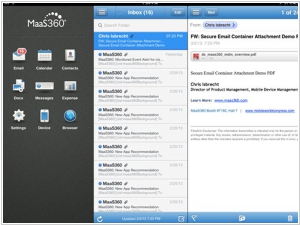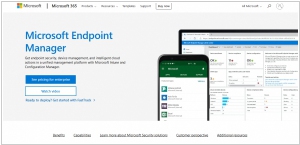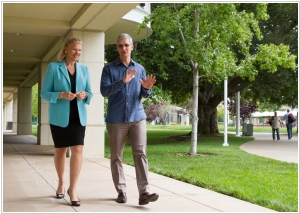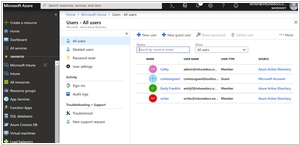MaaS360 vs Microsoft Intune
August 23, 2023 | Author: Michael Stromann
12

MDM in Minutes: Deploy, Secure and Support Smartphones & Tablets. Every organization needs to see and control the mobile devices entering their enterprise, whether they are provided by the company or part of a Bring Your Own Device (BYOD) program. MaaS360 mobile device management (MDM) is the fastest, most comprehensive way to make that happen.
MaaS360 and Microsoft Intune are distinctive solutions within the realm of endpoint management and security. MaaS360 is known for its robust mobile device management (MDM) and enterprise mobility management (EMM) capabilities, enabling organizations to efficiently control and secure mobile devices, applications, and content. It focuses on providing a comprehensive solution for managing and protecting mobile endpoints in a diverse and ever-evolving landscape. Conversely, Microsoft Intune is part of the Microsoft 365 suite and offers a cloud-based approach to managing devices, apps, and data. It integrates seamlessly with other Microsoft tools, allowing organizations to extend their security and management policies across endpoints within the Microsoft ecosystem.
See also: Top 10 MDM software
See also: Top 10 MDM software
MaaS360 vs Microsoft Intune in our news:
2020. Microsoft updates its Endpoint Manager with improved macOS support

Microsoft has introduced a variety of fresh enhancements to Microsoft Endpoint Manager, the company's comprehensive platform for managing and securing devices within an enterprise setting. This service, which combines the capabilities of Microsoft System Center Configuration Manager with the cloud-based tools of Intune, was launched less than a year ago. The latest updates enhance the existing framework and include enhanced support for macOS and iPad, as well as new tools for establishing connections between mobile devices and on-premises applications. Additionally, the updates introduce additional productivity tools based on the data collected by the service. Moreover, Microsoft has simplified the process for corporate IT departments to remotely provision devices for their employees.
2014. IBM and Apple partner for joint Enterprise push

30 years ago, IBM and Apple aspired to dominate the emerging personal computer market but were overshadowed by Microsoft, which monopolized the industry for a significant period. Despite the passage of time, the rivalry persisted. However, a recent development has brought IBM and Apple together in the enterprise mobile market. The evidence can be seen in the photo, depicting Ginny Rometta from IBM and Tim Cook from Apple engaged in discussions, finalizing a collaborative agreement. Under this deal, the companies will jointly enhance IBM MobileFirst, MaaS360, and other IBM business products specifically for iPhones and iPads. They will also market these optimized solutions, along with Apple mobile devices, to IBM's customer base. This strategic move possibly aims to challenge Microsoft as a primary competitor. Consequently, Windows Phone and Surface/Windows 8 may experience a significant decline in their positions within the enterprise sector. However, it is also plausible that Microsoft might once again outmaneuver its rivals. With Satya Nadella as the new CEO, Microsoft has shifted its focus away from platforms and devices, prioritizing cross-platform services instead. Notably, MS Office 365 already functions well on iOS, even better than on Android. Hence, if the share of iOS devices in the enterprise market expands, Microsoft stands to gain increased revenue regardless.




